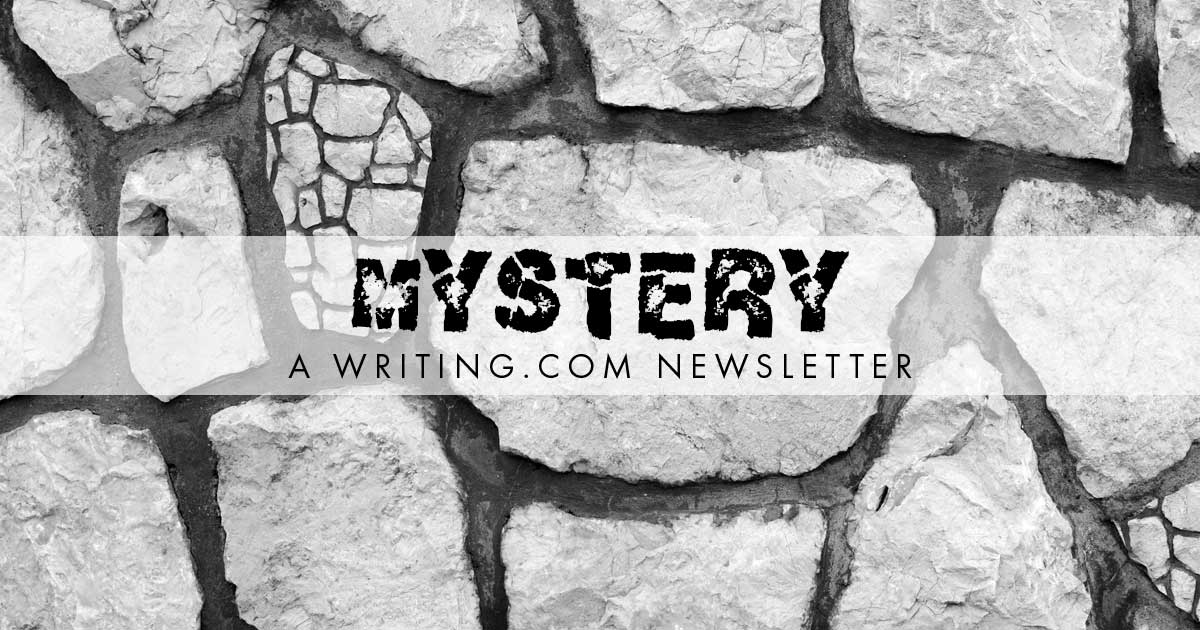This week: Liars and lie detectors Edited by: Arakun the Twisted Raccoon  
More Newsletters By This Editor 
![Table of Contents [#401437]
Table of Contents](https://shop.Writing.Com/main/trans.gif) ![Table of Contents [#401437]
Table of Contents Table of Contents](/main/images/action/display/ver/1709303267/item_id/401437.png)
1. About this Newsletter
2. A Word from our Sponsor
3. Letter from the Editor
4. Editor's Picks
5. A Word from Writing.Com
6. Ask & Answer
7. Removal instructions
![About This Newsletter [#401439]
About This Newsletter](https://shop.Writing.Com/main/trans.gif) ![About This Newsletter [#401439]
About This Newsletter About This Newsletter](https://www.writing.com/main/images/action/display/ver/1709303676/item_id/401439.png)
Quote for the week: "The trust of the innocent is the liar's most useful tool."
~Stephen King |
![Letter from the editor [#401442]
Letter from the editor](https://shop.Writing.Com/main/trans.gif) ![Letter from the editor [#401442]
Letter from the editor Letter from the editor](https://www.writing.com/main/images/action/display/ver/1709303784/item_id/401442.png)
A polygraph is a device designed to measure physiological responses while a subject is asked a series of questions. Because it is often used to determine whether the subject is telling the truth it is also called a "lie detector."
During a polygraph test, four to six sensors are attached to the subject. The sensors measure breathing rate, pulse, blood pressure, and perspiration. Additional sensors may measure other responses, such as arm and leg movement. Signals from the sensors are recorded on graph paper.
The polygraph works on the assumption that most people's physiological responses will change when they are lying. Due to nervousness associated with lying, the person's respiratory and pulse rates may increase for example.
At the beginning of the test, the examiner asks a group of questions with known answers to determine the subject's baseline. Examples of baseline questions might include:
Is your name Bob?
Are you 50 years old?
Do you live in Chicago?
After the baseline data is collected, the subject is asked another question with a known answer, but is instructed to deliberately lie. For example and adult subject might be asked if they are in first grade.
After the responses to truthful answers and lies are recorded, the examiner will ask the questions of interest, such as:
Did you commit the robbery?
Did you kill the victim?
Do you know who committed the crime?
While the American Polygraph Association claims that polygraph tests are approximately 87% accurate, an investigation by the National Academy of Science determined that accuracy is much lower, around 75%. Because of the high probability of inaccurate findings, polygraph tests are not admissible as evidence in court in many countries and US states.
Even in states where polygraph findings can be introduced in court, other restrictions apply. A suspect cannot be forced to take the test, and it cannot be introduced in court if the prosecution, defense, and the judge do not all agree.
Polygraph tests are often used as an interrogation tool even when they will not be used as evidence. Police may consider the results of a polygraph when deciding to pursue further investigation of a suspect. They might request a polygraph test hoping that the fear of being "found out" by the test might convince a guilty suspect to confess. They might also interpret refusal to take a polygraph test as evidence of guilt, although many defense attorneys advise all clients not to take them.
There are many reasons why a polygraph test might be inaccurate. The subject may be telling what they believe to be the truth, but might be wrong. An innocent person might feel they are to blame for a crime even though they did not commit it. The subject might show what seem to be "guilty" responses just due to anxiety about the test itself. Some people have no qualms about lying and will have no physiological response. Some subjects are able to "fool" a polygraph test by consciously changing their breathing and other measured responses while answering the baseline questions.
If you use a polygraph test in your story, be sure and research the law regarding its use in the area where your story is set.
Something to try: Write a mystery story that involves a polygraph test.
|
![Editor's Picks [#401445]
Editor's Picks](https://shop.Writing.Com/main/trans.gif) ![Editor's Picks [#401445]
Editor's Picks Editor's Picks](https://www.writing.com/main/images/action/display/ver/1709303830/item_id/401445.png)
![Word From Writing.Com [#401447]
Word from Writing.Com](https://shop.Writing.Com/main/trans.gif) ![Word From Writing.Com [#401447]
Word from Writing.Com Word from Writing.Com](https://www.writing.com/main/images/action/display/ver/1709303874/item_id/401447.png)
Have an opinion on what you've read here today? Then send the Editor feedback! Find an item that you think would be perfect for showcasing here? Submit it for consideration in the newsletter!
https://www.Writing.Com/go/nl_form
![Ask & Answer [#401448]
Ask & Answer](https://shop.Writing.Com/main/trans.gif) ![Ask & Answer [#401448]
Ask & Answer Ask & Answer](https://www.writing.com/main/images/action/display/ver/1709303902/item_id/401448.png)
| Question for next time: What subjects would you like to see in future mystery newsletters? |
![Unsubscribe [#401452]
Removal Instructions](https://shop.Writing.Com/main/trans.gif) ![Unsubscribe [#401452]
Removal Instructions Removal Instructions](https://www.writing.com/main/images/action/display/ver/1709303960/item_id/401452.png)
To stop receiving this newsletter, click here for your newsletter subscription list. Simply uncheck the box next to any newsletter(s) you wish to cancel and then click to "Submit Changes". You can edit your subscriptions at any time.
|
